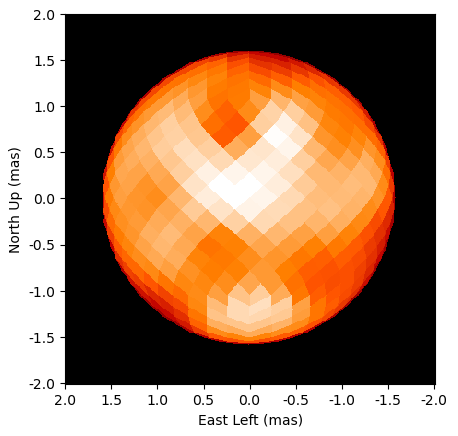
The North Star, Polaris, is the nearest and brightest Cepheid variable. Polaris gets brighter and fainter periodically as the star’s diameter grows and shrinks over a four-day cycle. Astronomers use Cepheids as “standard candles” to measure distances because their true brightness depends on their period of pulsation.
Polaris is also the brightest member of a triple-star system. Nancy R. Evans and collaborators used the CHARA Array to map the orbit of the close, faint companion that orbits Polaris every 30 years. The small separation and large contrast in brightness between the two stars makes it extremely challenging to resolve the binary system during their closest approach.
The team successfully tracked the orbit of the close companion and measured changes in the size of the Cepheid as it pulsated. The orbital motion showed that Polaris has a mass five times larger than that of the Sun. The images of Polaris showed that it has a diameter 46 times the size of the Sun.
The CHARA observations also provided the first glimpse of what the surface of a Cepheid variable looks like.The images revealed large bright and dark spots on the surface of Polaris.The distribution of these spots changed over the five years of observations. Continued monitoring in the future could indicate whether the changes in the distribution of spots could be related to rotation, pulsation, or convection.
Reference:
The Orbit and Dynamical Mass of Polaris: Observations with the CHARA ArrayEvans et al. 2024, ApJ, 971, 190



